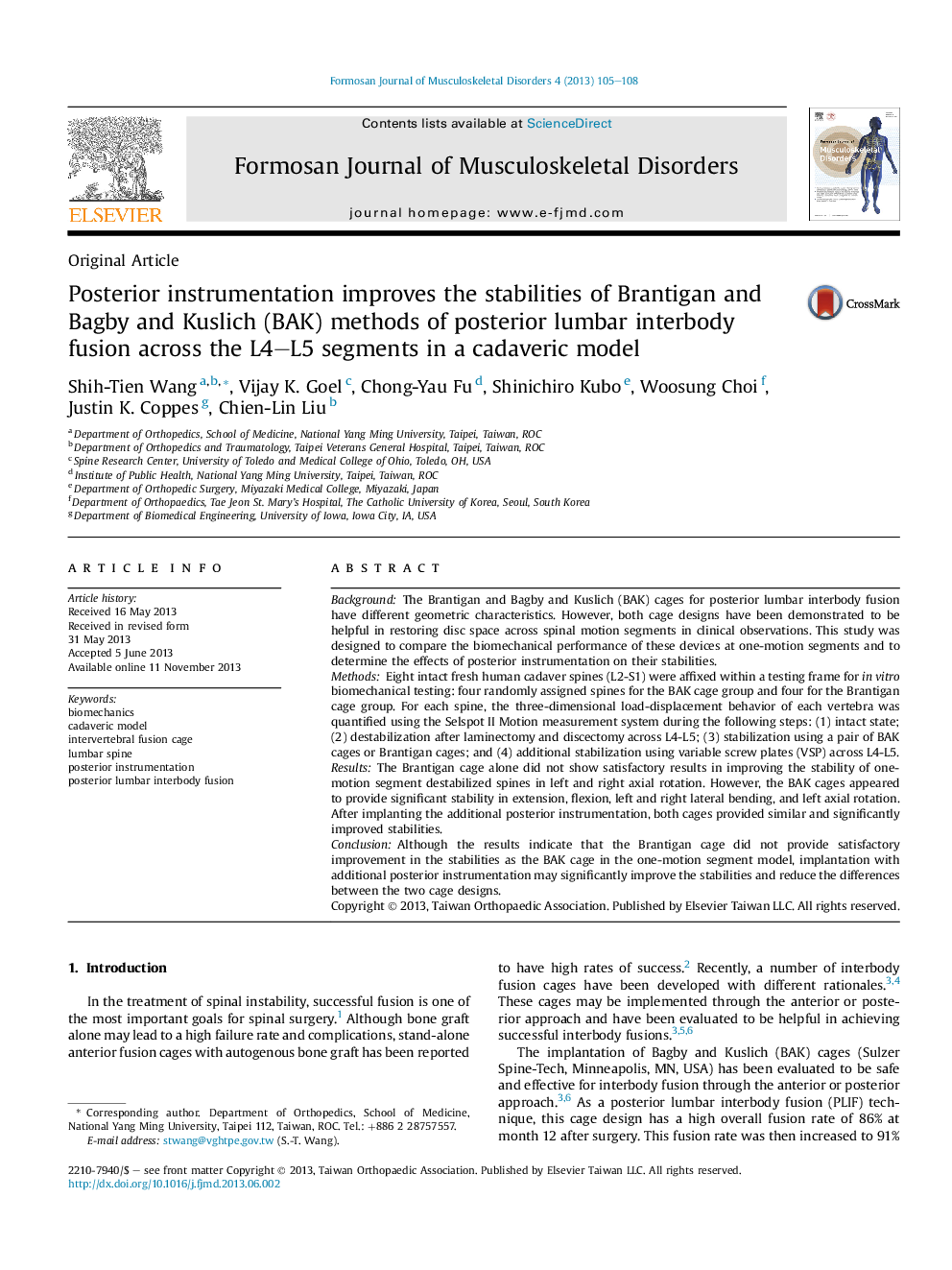| کد مقاله | کد نشریه | سال انتشار | مقاله انگلیسی | نسخه تمام متن |
|---|---|---|---|---|
| 4055322 | 1603817 | 2013 | 4 صفحه PDF | دانلود رایگان |

BackgroundThe Brantigan and Bagby and Kuslich (BAK) cages for posterior lumbar interbody fusion have different geometric characteristics. However, both cage designs have been demonstrated to be helpful in restoring disc space across spinal motion segments in clinical observations. This study was designed to compare the biomechanical performance of these devices at one-motion segments and to determine the effects of posterior instrumentation on their stabilities.MethodsEight intact fresh human cadaver spines (L2-S1) were affixed within a testing frame for in vitro biomechanical testing: four randomly assigned spines for the BAK cage group and four for the Brantigan cage group. For each spine, the three-dimensional load-displacement behavior of each vertebra was quantified using the Selspot II Motion measurement system during the following steps: (1) intact state; (2) destabilization after laminectomy and discectomy across L4-L5; (3) stabilization using a pair of BAK cages or Brantigan cages; and (4) additional stabilization using variable screw plates (VSP) across L4-L5.ResultsThe Brantigan cage alone did not show satisfactory results in improving the stability of one-motion segment destabilized spines in left and right axial rotation. However, the BAK cages appeared to provide significant stability in extension, flexion, left and right lateral bending, and left axial rotation. After implanting the additional posterior instrumentation, both cages provided similar and significantly improved stabilities.ConclusionAlthough the results indicate that the Brantigan cage did not provide satisfactory improvement in the stabilities as the BAK cage in the one-motion segment model, implantation with additional posterior instrumentation may significantly improve the stabilities and reduce the differences between the two cage designs.
Journal: Formosan Journal of Musculoskeletal Disorders - Volume 4, Issue 4, November 2013, Pages 105–108